By Roxanne Reid
There’s a matchless sense of place here in the Tankwa Karoo. If wide open spaces, big skies and silence appeal to you, you’ll love the Tankwa Karoo National Park. Although the peace and serenity you can find at the cottages and campsites may lull you into lethargy, there’s plenty to do and see. Here’s everything you need to know, from things to do and accommodation to roads and tips for making the most of your experience.
The park was proclaimed in 1986 and is now some 1460 square kilometres in size, though this may be added to in future. It sits on the Northern Cape’s southern boundary with the Western Cape, with the Kouebokkeveld mountains to the north, the Cederberg in the west and the blue-grey Roggeveld mountains in the east. It’s a place to marvel at the richness of the Succulent Karoo Biome and enjoy landscapes from mountains to Tankwa desert. Go in search of animals like Cape mountain zebra, springbok, red hartebeest, gemsbok and eland, gaze at a wealth of stars in the dark night skies, and listen to the silence.
Best things to do in Tankwa Karoo National Park
1. Go self-drive game viewing
2. Explore Oudebaaskraal Dam
3. Drive or hike to the Elandsberg viewpoint
4. Drive the Gannaga Pass
If the weather is good, you don’t really need a 4×4 but I’d recommend high clearance. Remember that the pass can become slippery when it rains or snows so check at the Roodewerf reception office before you set out. (Note also that heavy rains in December 2022 created some rough sections along the pass, especially near the river where the low water bridge has washed away; for now, although you can cross further down, you will have to check water levels and take it slowly.)
5. Visit the tiny town of Middelpos
6. Enjoy some star-gazing
7. Admire the wealth of plants
8. Go bird-watching
Find a full list of bird species of Tankwa Karoo National Park here.
Don’t miss the annual Tankwa Birding Bonanza in April when birders – from beginners to experts – compete in teams to see who can spot the most species in a limited period. The event is hosted by the Boland Region of the SANParks Honorary Rangers.
9. Drive the Ouberg Pass
Before tackling the pass, just be sure that you have a 4×4 vehicle with high clearance and low range, and check locally before you set out because the road can be impassable after rain. For instance, after heavy rain and flooding in December 2022, wash-aways and rough sections made the pass something of a 4×4 adventure challenge. Farmers have done some repair work and it’s not dangerous but you do need to go very slowly in places, so allow ample time if you decide to drive this route.
10. Drive a 4×4 trail
There’s a number of off-road tracks in the park to enjoy; they are marked with a dotted line on the map you get at reception when you check in. If you have a 4×4 you’ll be pleased to know that there are also two full-blown 4×4 trails for the serious adventurer – the Leeuberg 4×4 Eco-trail in the north-west and the Watervlei 4×4 Trail in the north-east of the park.
The 11km Leeuberg trail provides some superb views of the Elandsberg and Roggeveld to the north and the Leeuberg to the east. It’s a one-way route that needs some low-range first-gear driving. It passes Rooivlei, one of the few pans in the park. Don’t drive on the pan even when dry but especially when it’s wet – not just because you may get stuck but also because it causes environmental damage.
The 20km Watervlei trail crosses a plateau between Gannaga Lodge in the west and the Langkloof in the east. It branches off the Gannaga Pass, takes a wide loop along the plateau and then returns to the Gannaga Pass. You’ll pass a number of old shepherds’ huts or bywoners’ huts along the route and get good views out towards the Langkloof. The trail was closed when we last visited in October 2022 following storm damage that needs major repairs along part of the route. Management couldn’t give me a timeline for when these would be carried out.
Note that you need a permit from the Roodewerf reception offices to drive either of these 4×4 trails.
Tankwa Karoo National Park accommodation
Elandsberg Wilderness Camp
The open-plan living area has a fireplace and TV, two couches and a 4-seater dining table and chairs. The kitchen is stocked with all the pots, pans, crockery and cutlery you need for your self-catering stay (even a coffee press so bring your ground coffee beans). Although the rietdak ceiling and peach-pip floor evoke the past, a fridge/freezer, two-plate gas hob and microwave provide modern convenience. All lights are solar-powered and there are plug points for charging camera batteries.
The large bedroom window opens out onto a stoep, and in October we had a view of purple and yellow flowers and blue-grey mountains in the distance. We watched four-striped grass mice gathering food (protect your food because they sneak into the cottages too), an angulate tortoise ducking under the bushes, even a hare hopping along late one afternoon.
I love that the cottages aren’t close together, giving you a sense of breathing room and space here in the wide Tankwa Karoo. My favourite 2-bed units would be numbers 1, 2 and 10. Numbers 3, 7, 8 and 9 are 4-bed units.
Read more about Elandsberg Wilderness Camp
Farm cottages
If you prefer to go old-school and stay in a genuine old farmhouse that has been repurposed for tourism, then book at Paulshoek or DeZyfer which are furnished with furniture from times gone by.
Paulshoek is about 5km from reception and sleeps up to 6 people in two bedrooms, each with a double bed and a single bed. There’s one bathroom with basin, loo and shower. To get hot water for the shower or kitchen you need to make a fire in the donkey boiler outside with the wood that’s provided. There’s an open-plan living room and the kitchen has a solar-powered fridge/freezer and two-plate gas hob as well as pots, pans, cutlery and crockery for self-catering. Lighting is provided by paraffin lamps and candles, and there’s a wood stove inside for cold Tankwa Karoo winters. Bring your own wood for this and the braai area outside so you can enjoy the views of the Roggeveld Escarpment. It’s a good idea to bring a torch too.
Tanqua Guesthouse complex
Resembling a somewhat forbidding desert fort, the Tanqua Guesthouse complex is on the southern boundary of the park not far from Oudebaaskraal Dam. It offers a number of units best suited for larger groups of up to 18 people. There’s one unit sleeping 2 people, 2 units sleeping 4 people and one unit sleeping up to 8 people. You can book them separately or together, but either way you need to share the communal living, kitchen and braai areas. There are gas appliances in the kitchen as well as pots, crockery and cutlery. All lights are 220V electric.
When you arrive in the park you first need to drive to reception at Roodewerf (39km away) to check in and get the keys before you can access your unit.
Gannaga Lodge, Tankwa Karoo
Read more about Gannaga Lodge
Tankwa Karoo National Park camping
There are two formal campsites and six other designated spots where fully self-sufficient campers are allowed to camp.
Formal campsites
Langkloof campsite
Langkloof campsite lies in the upper part of the Lankloof Gorge about 18km from the Roodewerf reception office, where you need to check in. There are only two campsites so there’s plenty of space and peace for you to enjoy. Each campsite has its own bathroom (shower, basin and separate toilet with basin) and kitchen with a countertop and washing up sink only. There’s a carport to provide shade. A gas geyser supplies hot water for the bathroom and kitchen. Paraffin lamps are provided for lighting but I recommend you bring a head torch and your own solar or gas lights as well. There are no electrical points so you need to be self-sufficient with your own solar panels or batteries if you want to run a camping fridge.
To get to Langkloof you need at least a high clearance 2×4, unless it has been raining when you’d need a 4×4. Be aware that the road to Langkloof crosses the Renoster River and its Hoenderhoek tributary so check with the folks at reception before you drive there that it isn’t flooded, which might happen in winter or after summer thunder showers.
Perdekloof campsite
Each site has a little shade from scraggly trees at certain times of day so you can move your camping chairs around to catch the cool. If you have a roof-top tent, try to book either site 1 or 5. Numbers 5 and 6 are probably the most private stands because no one is driving past you to get to their patch.
To get to Perdekloof you need at least a high clearance 2×4, unless it has been raining when a 4×4 is recommended as more of a sure thing.
Informal campsites
If wild camping on a leave-only-footprints basis appeals to you, then you’ll love one of the six wild, informal campsites in the park. Your booking gives you exclusive use of the entire site for up to 15 people in one group. Some of these sites have a ruined building to keep you company, but what we love is the peace and the 360-degree view of Karoo scrub and mountains. Soak up the silence and use the solitude to get back in touch with your soul.
Be aware that these sites have no facilities at all – no ablutions, no kitchens, no braai places, no water – so you need to bring everything you need, including your own drinking and washing water. Some people get all sophisticated and bring their own gas-fired showers and biodegradable soap while others are content to do a basic wash from a plastic basin. Toilet facilities can also be a challenge, with the best advice being to find a bare patch of sand (not surrounded by dry, flammable grass) a fair distance from your stand where you can dig a hole. Burn the toilet paper in the hole before covering it up again with sand to prevent the possibility of a veld fire.
Please don’t leave any rubbish behind. If it will burn you can dispose of it in your campfire, but remember that metal cans do NOT burn! Rather carry it all out in a stout plastic bag and leave it at reception for disposal.
- Steenkampshoek – 12km from reception
- Pyper se Boom – 8km from reception
- Oom Rickert se Huis – 16km from reception
- Skaapwagterspos – 13km from reception
- Volmoersfontein – accessible for sedans, 32km from reception
- Biesiesfontein – accessible for sedans, 35km from reception
You must check in at Roodewerf reception before driving to your campsite. Bring enough water with you for your stay or at worst fill up your canisters at Roodewerf reception. Volmoersfontein and Biesiesfontein are accessible by normal 2×4 sedans, but the other four are best suited for high clearance vehicles and in rainy season for 4x4s only – especially Pyper se Boom and Oom Rickert se Huis because the road to these campsites crosses the Renoster River and Hoenderhoek tributary. Check at reception before you drive there that it isn’t flooded, which might happen in winter or after summer thunder showers.
Facilities
Tankwa Karoo National Park is still in a developmental and land consolidation phase and has few facilities compared to many other national parks around South Africa. But it’s a perfect place to get away from noise and overcrowding, to relax among vast open plains and wide starry skies.
- At a push, you can fill up with diesel at the Roodewerf reception offices but no petrol is sold in the park. The closest petrol is at Ceres (180km away), Sutherland (140km, closed on Sundays), Calvinia (110km) or Middelpos (52km, though the co-op here is currently – March 2023 – closed).
- There’s no restaurant and no shop selling groceries or toiletries so bring all your food, drink and other necessities with you for your self-catering stay. There’s a small general dealer and liquor store in Middelpos about 52km away, beyond the Gannaga Pass.
- There’s no ATM in the park.
- Reception takes credit card payments.
- There are no guided drives or walks in the park.
- All roads in the park are gravel, as are many of the access routes (see ‘Getting there’ and ‘Getting around’ below).
Given that the Tankwa Karoo National Park forms part of the Succulent Karoo Biome, which is recognised as a biodiversity hotspot, and that the Roggeveld is a recognised centre of endemism, one of the conservation challenges here is to maintain its integrity without overdevelopment. Since it’s remote from large towns and the impacts of mass tourism, SANParks has handled this aspect well so far, managing to maintain its wilderness ambience.
Another challenge is that because the park includes public access gravel roads, isn’t fenced and has no controlled entry gates, it’s difficult to monitor who accesses it. This presents a potential threat in the form of vandalism, poaching and illegal harvesting of its distinctive plants. Dust pollution, erosion and alien plants are other threats. Mining – fracking in particular – remains a possible danger here and elsewhere in the Karoo, although hopefully its national park status can be used to safeguard it from any future plans for mining/fracking.
Getting there
The easiest route you can take to the Tankwa Karoo National Park from Cape Town is along the N1 and R43 to Ceres. Then drive north on the R46 for 40km and turn left onto the gravel R355 towards Calvinia. This will be the first of many gravel roads you travel towards and inside the park. After some 70km, turn right on the P2250 (also gravel) towards Middelpos and continue for a further 75km to reach the reception offices at Roodewerf. This route will take you past the wacky Tankwa Padstal, where you can stop for a cold drink or something to eat (closed on Wednesdays). (Note that the R355 was flooded by heavy rain in December 2022, but it’s still drivable if you take it slowly here and there.)
If you’re approaching from the north, the R355 turnoff is just west of Calvinia. Drive for 50km, turn left onto the P2267. The Roodewerf reception offices are a further 55km along this road. The R355 and P2267 are gravel roads that are drivable with a 2×4 sedan. See ‘Getting around’ below for some tips on driving on gravel roads.
Find Tankwa Karoo National Park on Google Maps here.
All the main access roads to the park and roads inside the park are gravel. You should be able to manage the main routes to reception and your cottage accommodation in a 2×4 sedan, but high clearance is advisable for accessing most of the campsites. In rainy season, 4×4 is recommended to access the campsites, especially Langkloof, Pyper se Boom and Oom Rickert se Huis (see ‘Tankwa Karoo National Park camping’ above).
There are also some 4×4 only routes in the park, which are clearly marked by a dotted line on the map you get when you enter the park. If you don’t have a proper 4×4 you need to avoid these to prevent getting stuck or damaging your vehicle. If you’re unsure, the friendly staff at reception can point out the no-go areas to you when you check in.
I often hear people complaining about the condition of the roads in the Tankwa. Your experience will depend a lot on when you go, when last the roads were graded, when last there was rain, and how you drive. Yes, there can be washaway damage after rain and there are corrugations. Also, the gravel roads have loose stones that are sharp, which can be cruel to tyres. Deflate your tyres to absorb the jiggle of some of the corrugations, but not so far that the sharp gravel can cause sidewall punctures. Make sure you have a jack and a decent spare that’s pumped to the right pressure in case you need to change a tyre.
Remember that speeding will make you more likely to skid on loose gravel or slip on wet roads so slow right down and never slam on your brakes. Even on the main gravel roads, we tend to stick to a maximum of 60km/h, a lot less on the minor roads. Always stay far to the left when approaching a blind rise and switch on your headlights to alert oncoming vehicles if you’re travelling in dust.
If you visit in rainy season, be aware of the possibility of flash floods crossing roads and don’t try to be clever. Check the speed and depth of water, as well as the substrate (sandy, rocky, holes) before you try to cross, or be patient and wait for the water to subside.
If you want to drive the Gannaga or Ouberg passes or to the Elandsberg viewpoint, check the road conditions with reception beforehand.
See a map of the park here. If you want a more detailed map of the area, look for the Slingsby map of the Tankwa Karoo and Roggeveld Escarpment. You can buy it online from Tracks4Africa or if you’re approaching via Ceres, ask for it when you stop at the Tankwa Padstal.
The Tankwa Karoo is one of the most arid parts of the Karoo, with average annual rainfall of between 0mm and 100mm, much of it in winter with just 25% in summer although in December 2022 unusually heavy rains and flash floods caused extensive damage to roads and other infrastructure in the whole Tankwa area, including the park. The higher regions like the Roggeveld Escarpment get up to five times more rain than the plains below, mostly because rain clouds are blocked by the Cederberg mountains. The wettest months are usually May and June, followed by August. September to November are usually the driest months.
Summer temperatures in the Tankwa Karoo sizzle into the high 30s, with the highest temperature measured being a whopping 50 degrees Celsius. You’ll experience high temperatures from November to March, with January and February being the hottest months. In addition, the months of October to March have the highest wind speeds.
By contrast, winters are cold with average lows of 6-7 degrees Celsius at night and in the early mornings, although the lowest recorded minimum is minus 1. Snow can sometimes fall on the high peaks, and it’s special to see Gannaga Lodge at the top of Gannaga Pass covered in a white blanket. During the day, temperatures from May to August reach a mild 16-18 or even up to 20 degrees.
Although you’ll enjoy your trip whenever you choose to go, to my mind September and October are the best months to visit the park. Temperatures usually don’t get much above 30 degrees, which is great if you wilt in extreme heat as I do, and the average rainfall is only 3-10mm so you’re not worrying too much about slippery, muddy roads or flash floods. But by far the best reason to visit in these months is that the veld springs to life and transforms itself from a dusty monotony of khaki to a mosaic of pink, purple, white, orange and yellow flowers that will make your heart happy.
- Although there are no entrance or camp gates in the Tankwa Karoo National Park, travelling times are restricted. From April to September, you can only drive in the park between 6:30 and 18:00; from October to March you may be on the roads from 5:30 to 19:00. The only exception to this is for people who arrive no later than 21:00 at the Roodewerf reception offices on a Friday, who may then drive the most direct route to their prebooked accommodation.
- At a push, you can fill up with diesel at the Roodewerf reception offices but no petrol is sold in the park. Rather fill up on your way in at Ceres (180km away), Sutherland (140km, closed on Sundays), Calvinia (110km) or Middelpos (52km, though the co-op here is currently – March 2023 – closed). If you plan to be in the park a while or have a small tank, it may be worth bringing a spare canister of fuel so that you don’t have to stint on your explorations around the park.
- There’s no restaurant and no shop selling groceries or toiletries so bring all your food, drink and other necessities with you for your self-catering stay. You can buy wood at the Roodewerf reception offices, but for everything else, be self-sufficient or visit the small general dealer and liquor store in Middelpos about 52km away beyond the Gannaga Pass.
- There’s no ATM in the park. The nearest are in Ceres (180km away), Sutherland (140km) and Calvinia (110km).
- Reception takes credit cards payments.
- There are no guided drives or walks in the park.
- In addition to your accommodation fee, a daily conservation fee is payable per person for each day you’re in the park, unless you have a Wild Card, in which case you don’t pay the conservation fee. If you’re visiting other parks within a year of visiting the Tankwa Karoo, getting a Wild Card is often worthwhile. See all the details on how to get one here.
- All roads in the park are gravel, as are many of the access routes (see ‘Getting there’ and ‘Getting around’ above for tips on gravel driving).
- If you’re driving a sedan, ask reception to point out on the map they give you which roads are safe for you to drive without a 4×4.
- Motorcycles are allowed in the park, unlike most other national parks in the country.
- Although there are no formal hiking or mountain biking trails, you’re welcome to hike or bike any of the tracks near your booked accommodation, but not in the wider park.
- There’s no cellphone reception in the park. Although the Roodewerf reception advertises wifi, the last time we visited it wasn’t working so don’t rely on it. Rather just switch off completely and enjoy your environment.
- Emergency radios are scattered around the park, for instance at Elandsberg, between Oom Rickert se Huis and Langkloof campsites, near Paulshoek cottage and near the Tanqua Guesthouse complex. You can use these to report any problems or emergencies you may be having to the Roodewerf offices.
- Stay on the designated roads. Driving off road into the veld for any reason causes ecological damage and you may incur a fine if a ranger catches you where you’re not supposed to be.
- Always carry plenty of water in the vehicle in case of a breakdown or other emergency.
- Don’t forget to pack your camera/phone, binoculars, hat and sunscreen. Remember that drones aren’t allowed in any of South Africa’s national parks.
- Never pluck any plants or even pick up dead wood for kindling your camp fire. Both are offences that may incur a fine or result in your ejection from the park.
- For all rates and bookings, contact SANParks Central Reservations, tel +27 (0)12 428-9111, email reservations@sanparks.org.
- Tankwa Karoo National Park’s website is https://www.sanparks.org/parks/tankwa/.
- For any other queries, Tankwa Karoo’s direct telephone number is +27 (0)27 341-1927, email tankwares@sanparks.org.
You may also enjoy
The Tankwa Padstal in the Karoo
Gannaga Lodge at the top of Gannaga Pass, Tankwa Karoo
15 things to do in Sutherland
Karoo National Park: the ultimate guide
Like it? Pin this image!






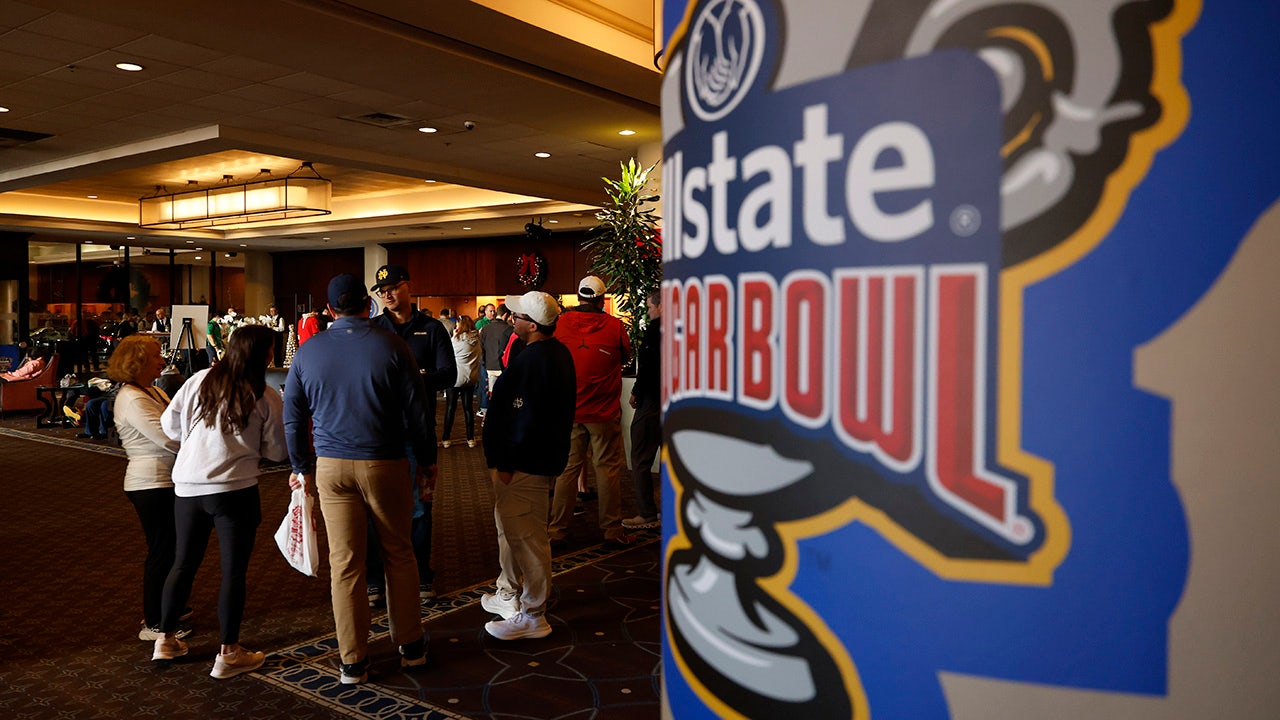
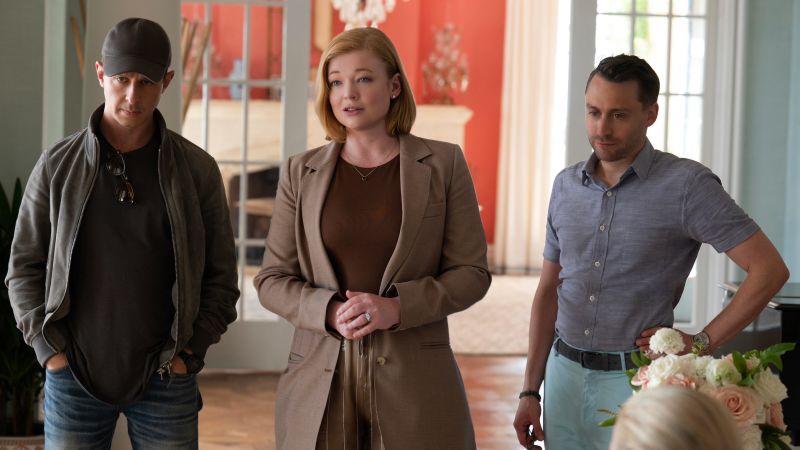


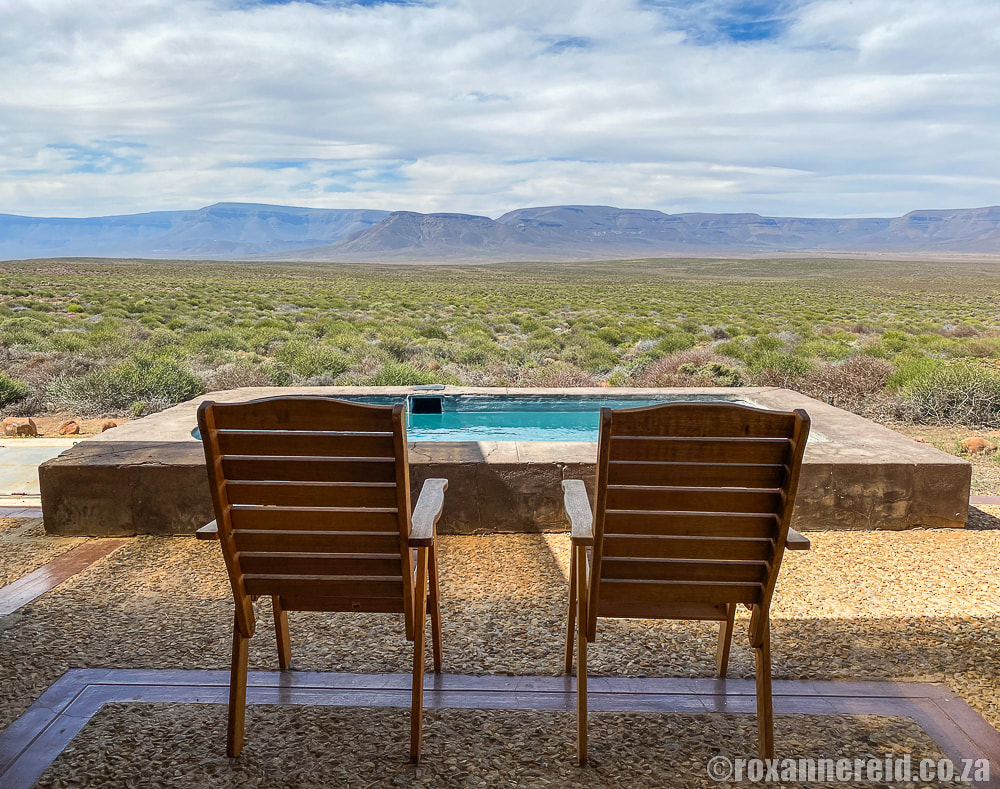
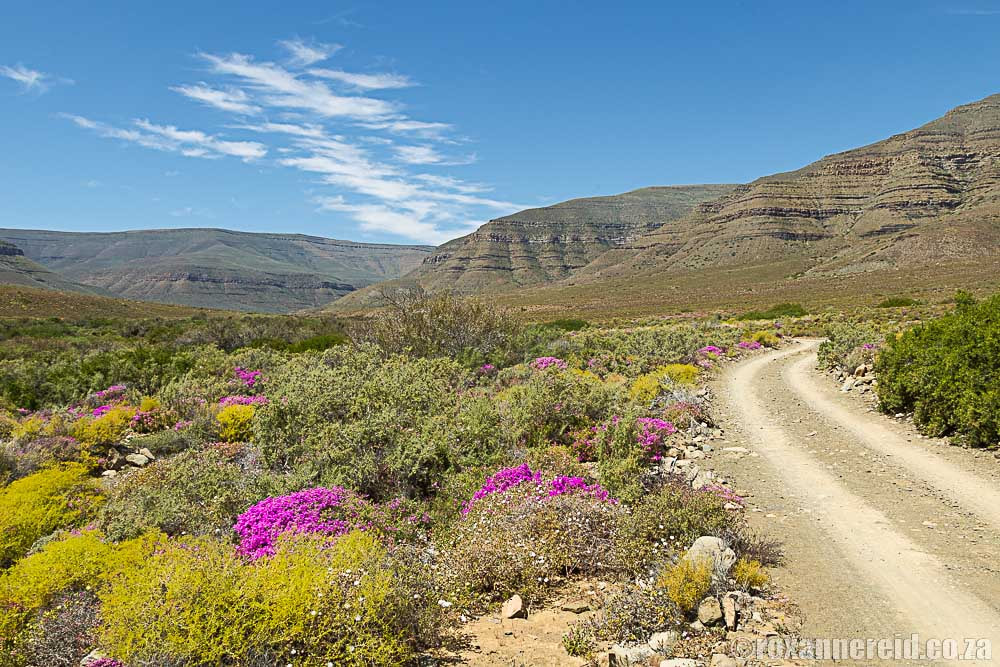
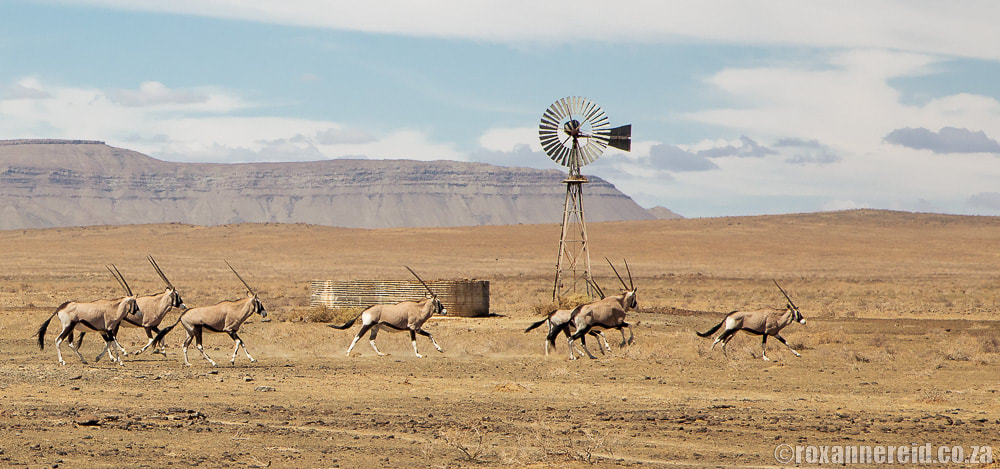
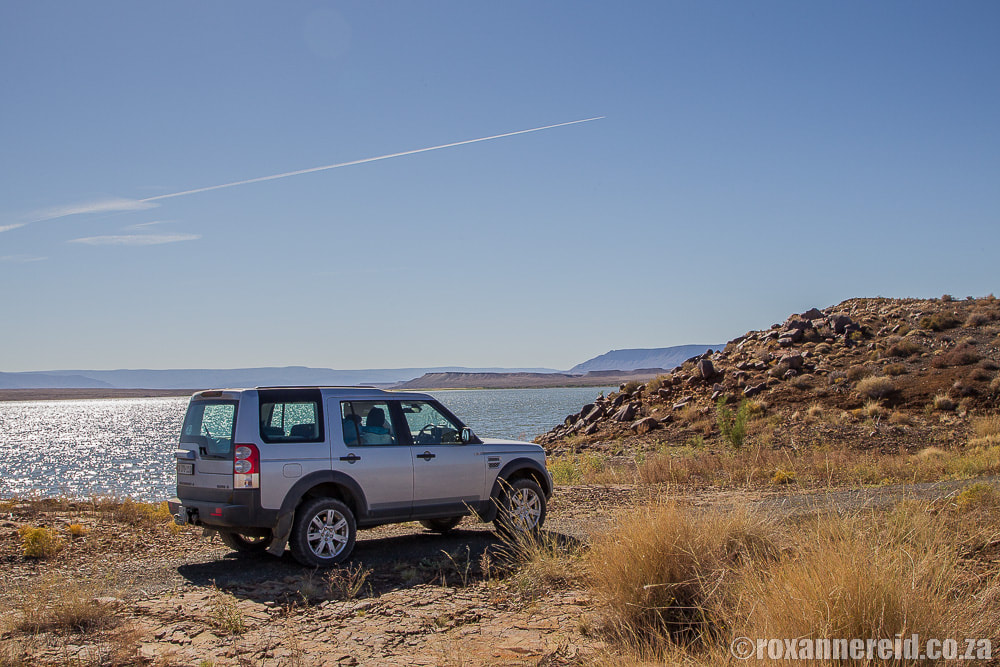
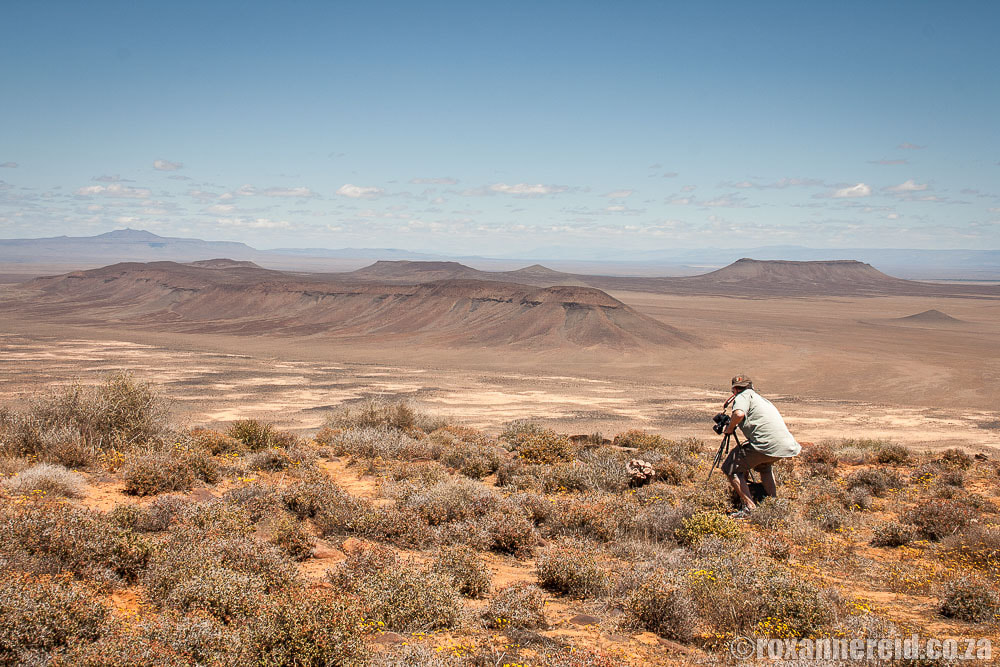
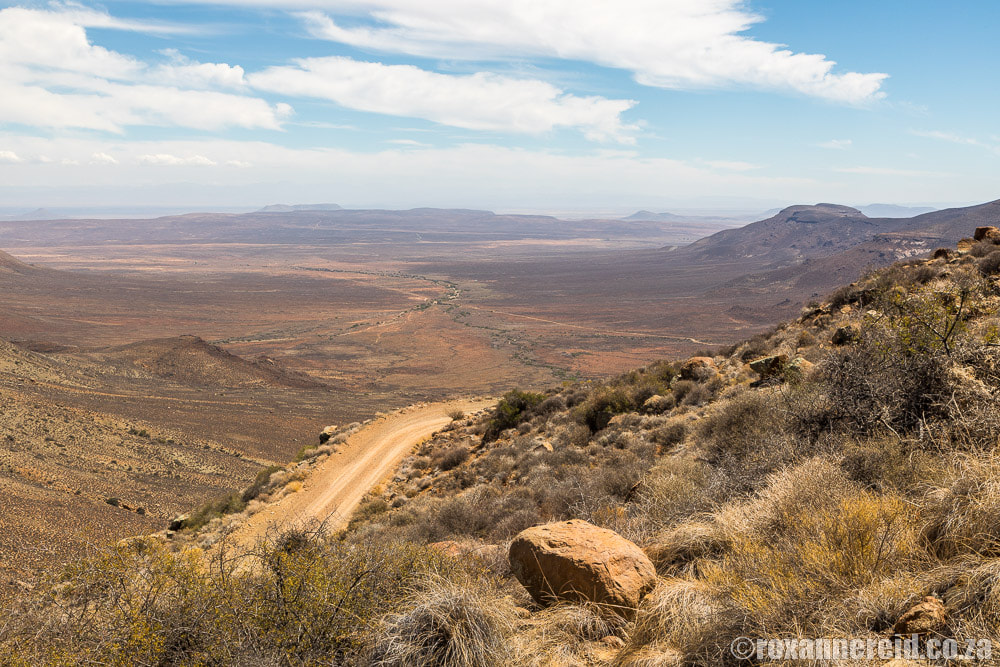
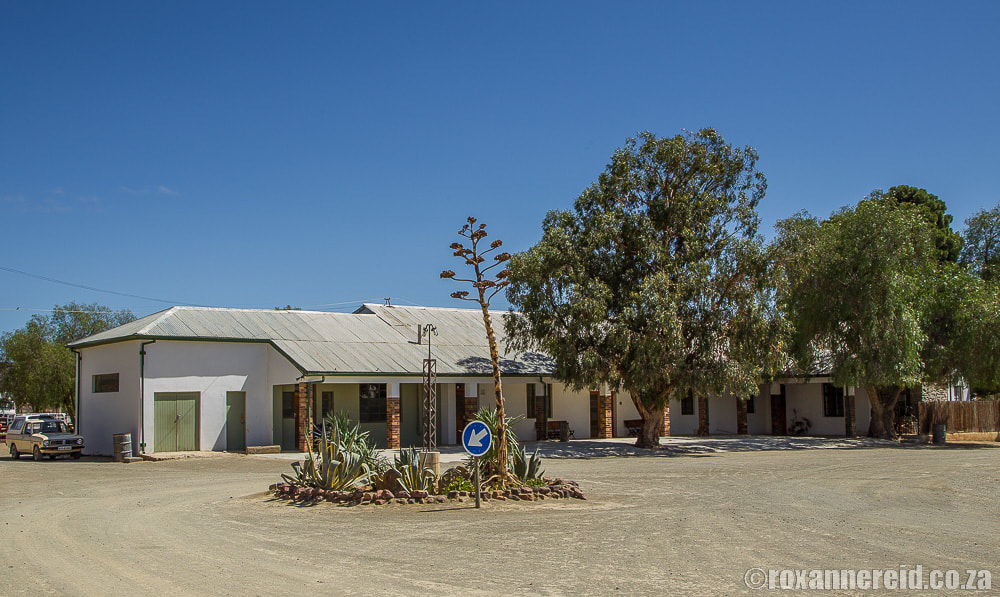
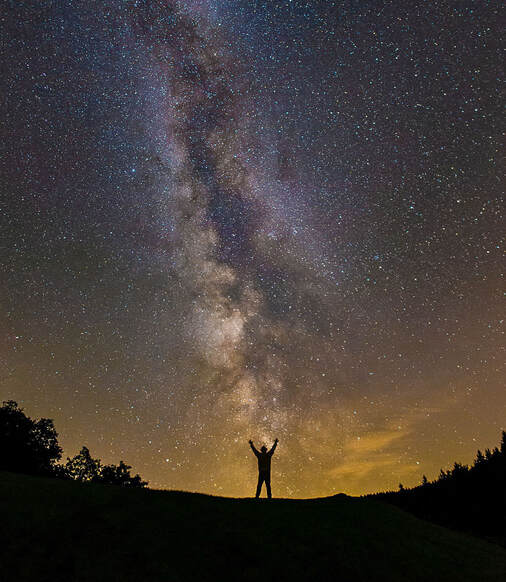
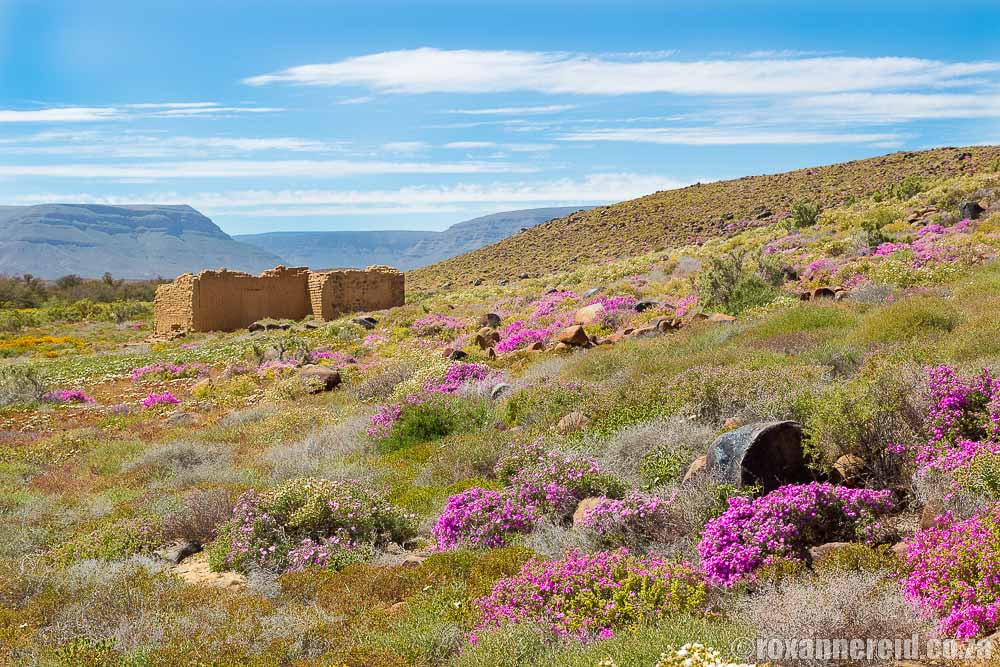
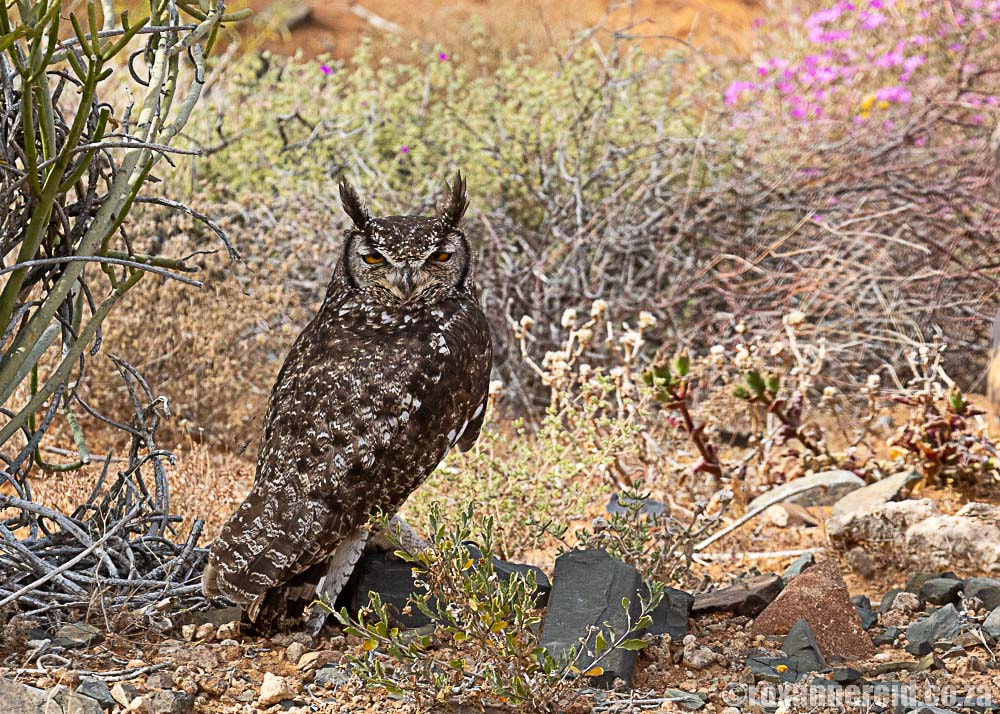
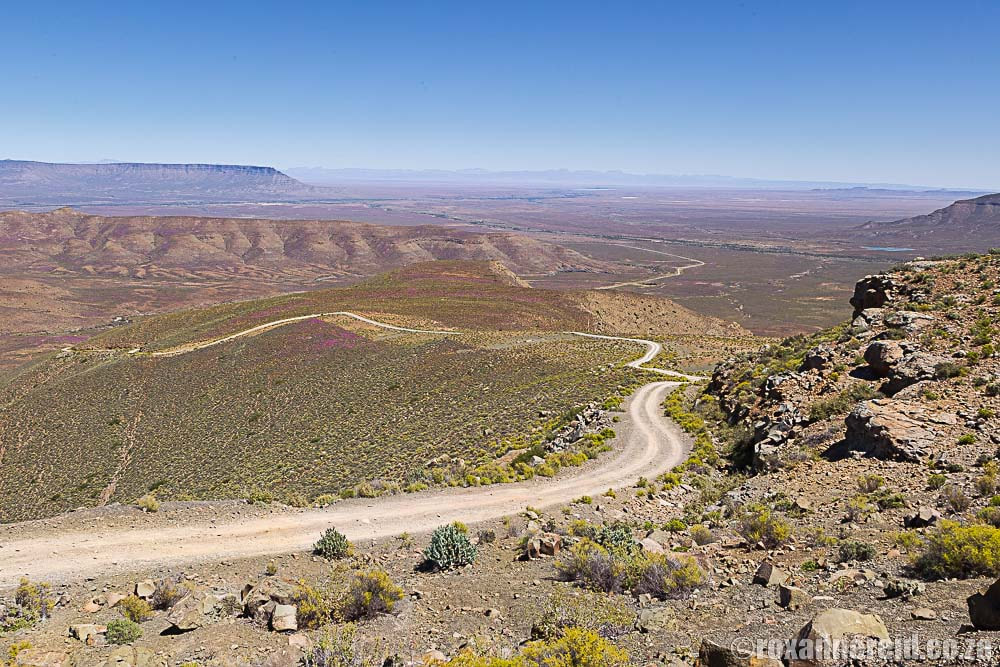
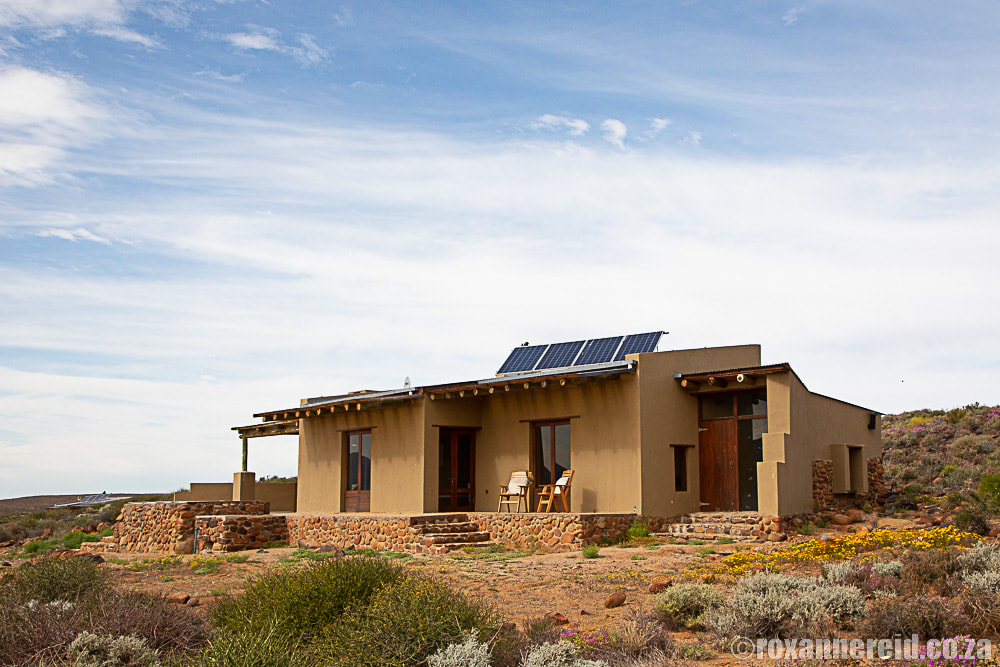
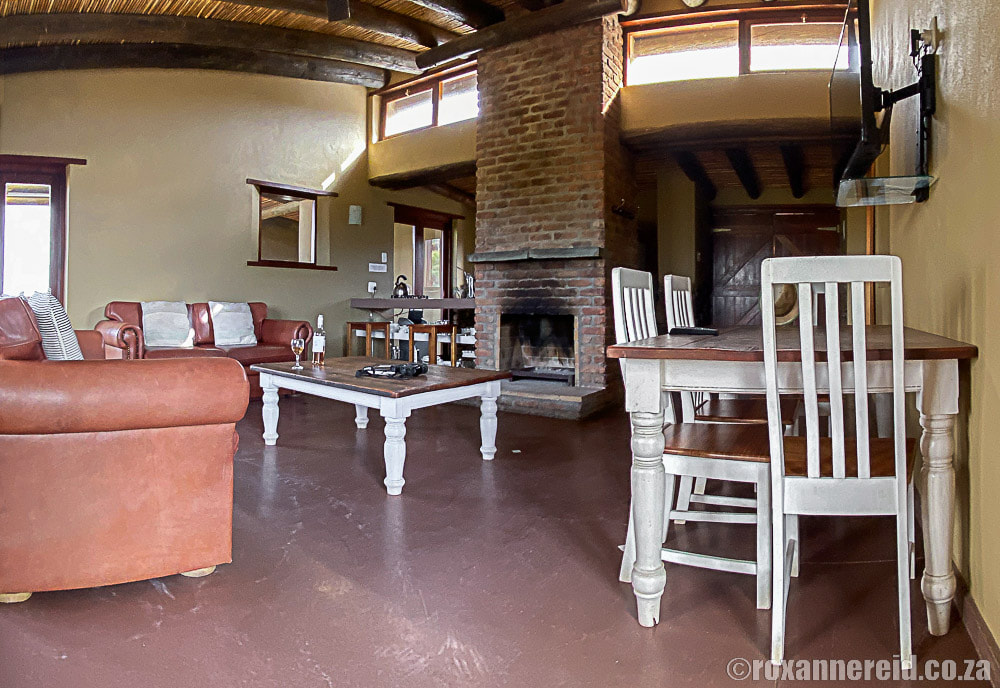
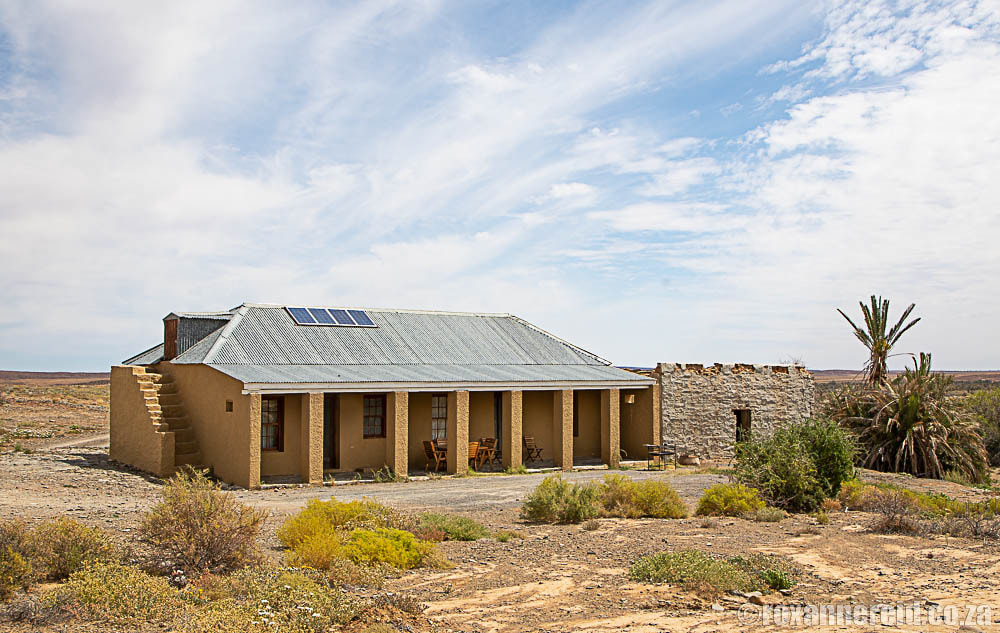
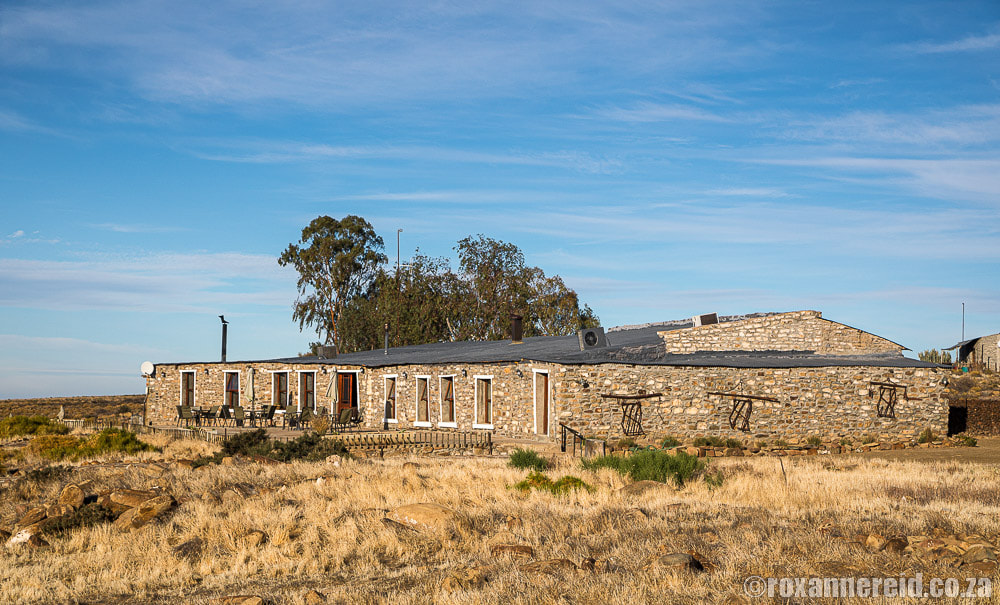
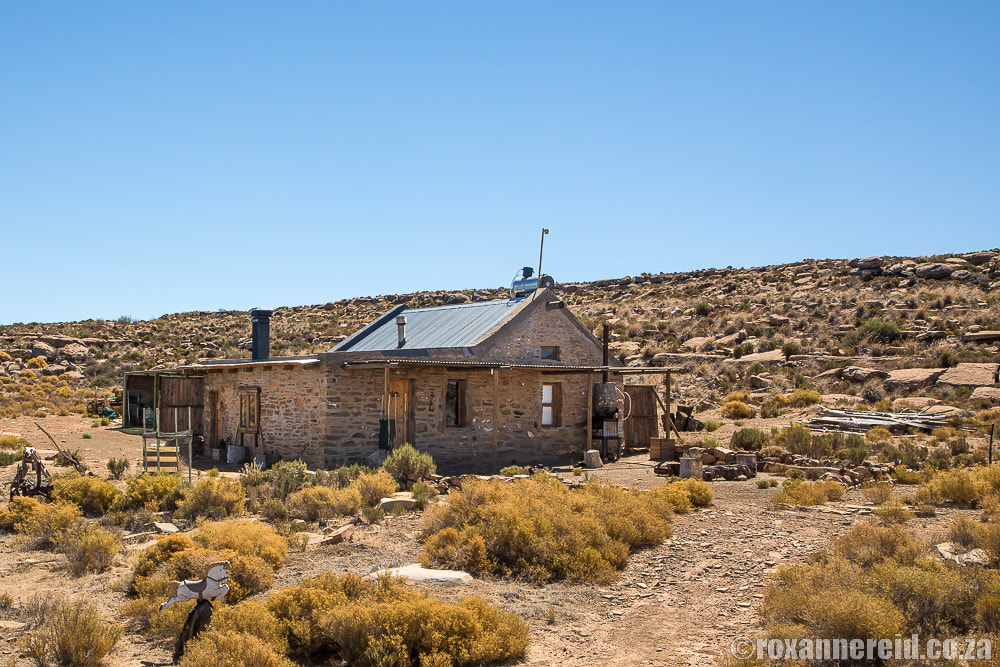
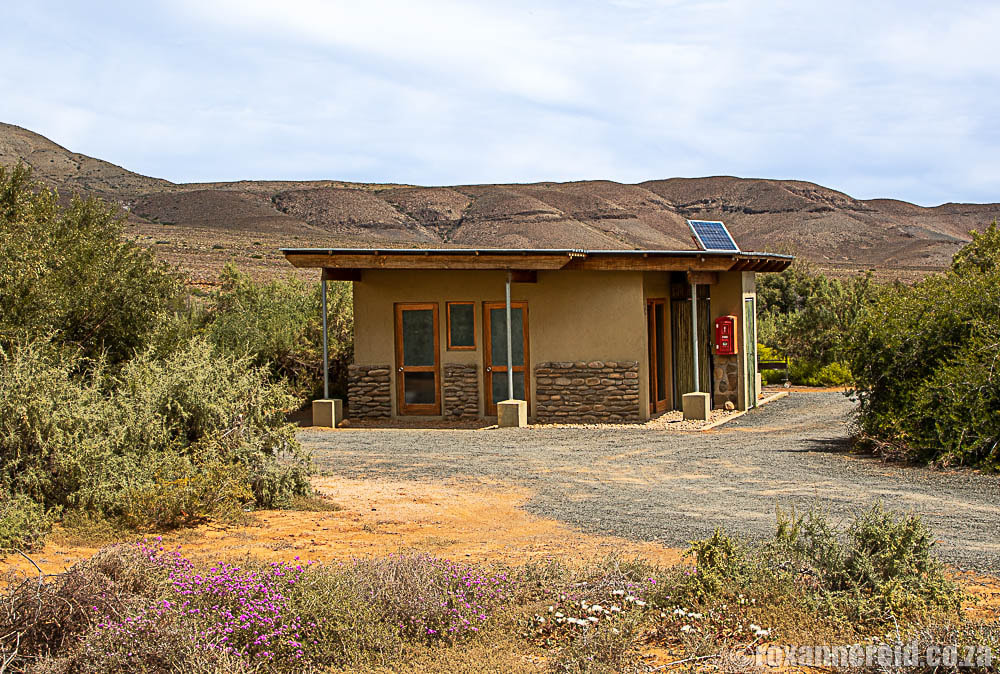
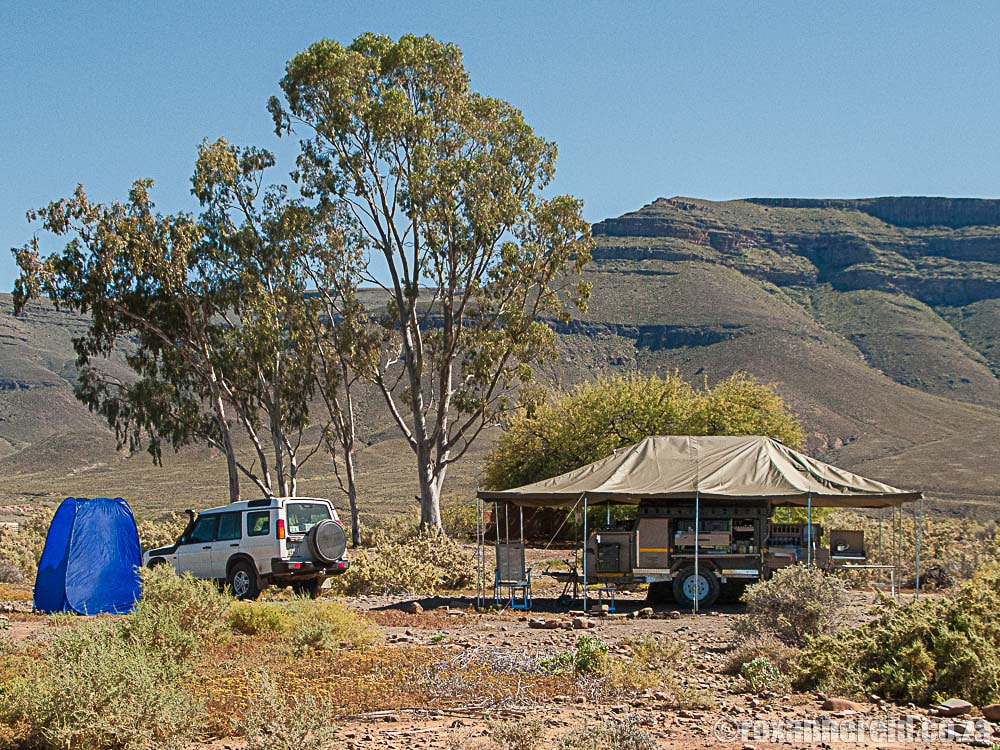
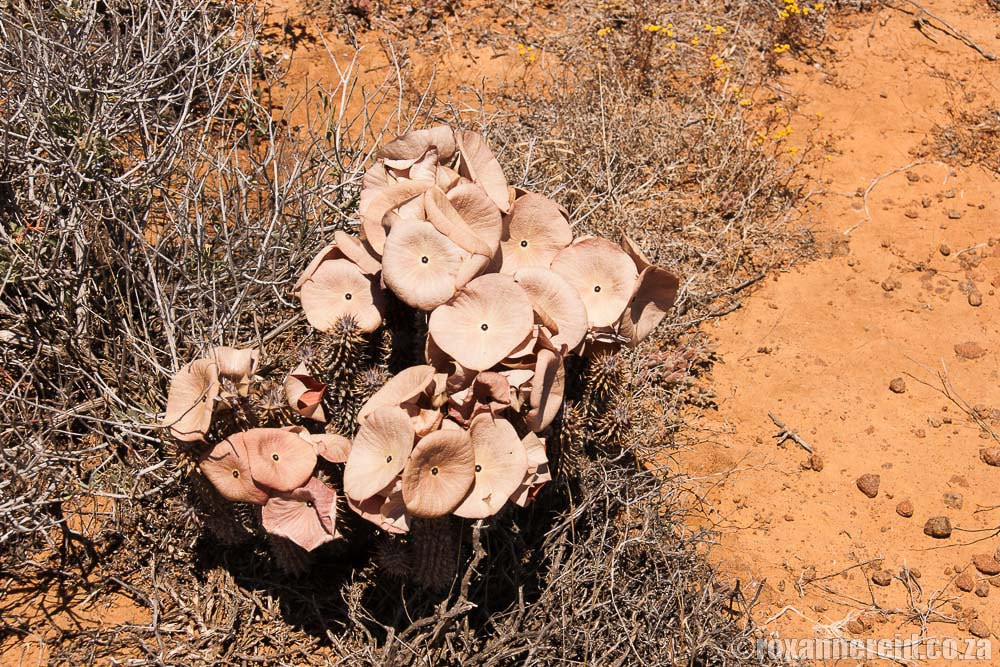
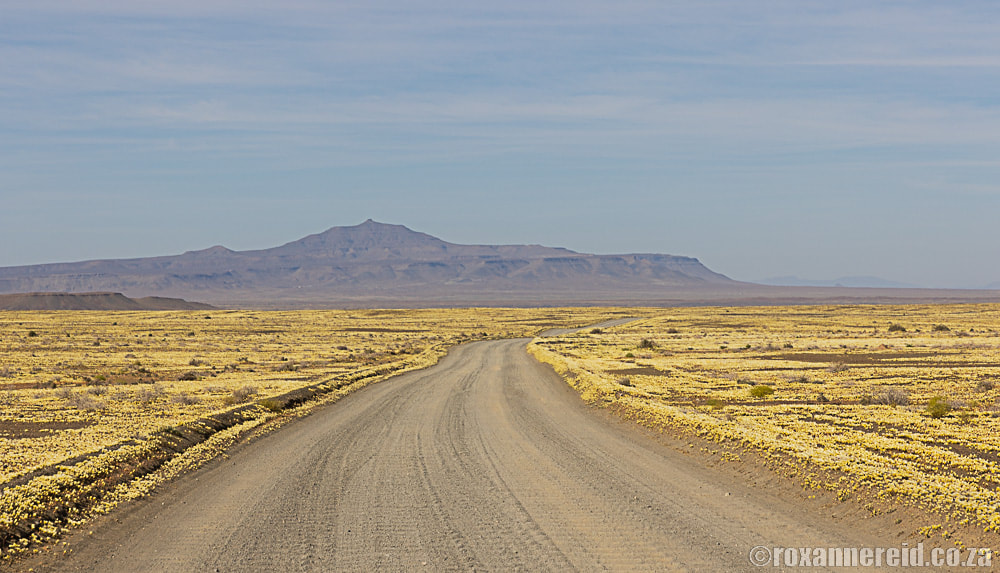
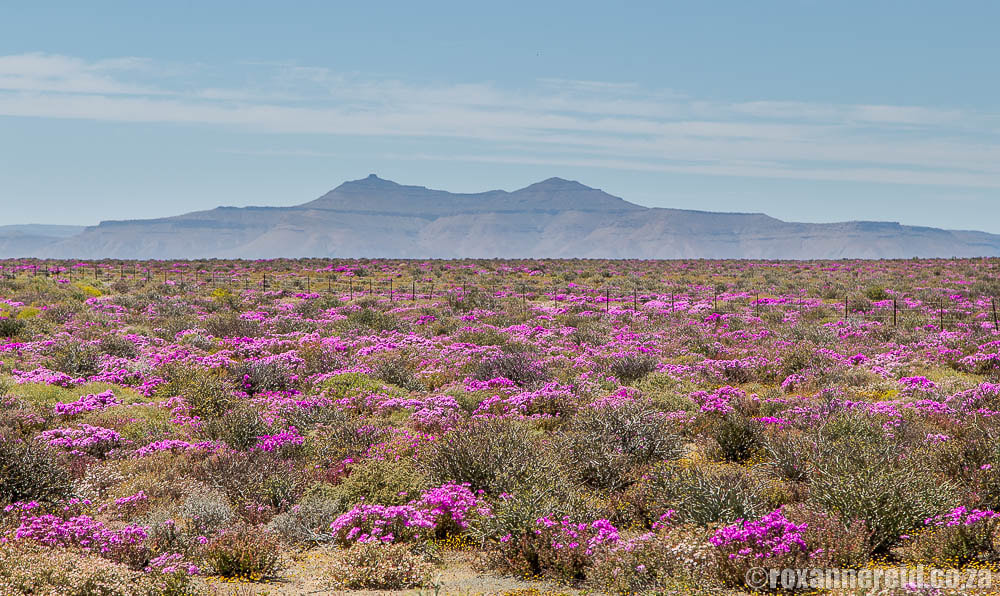
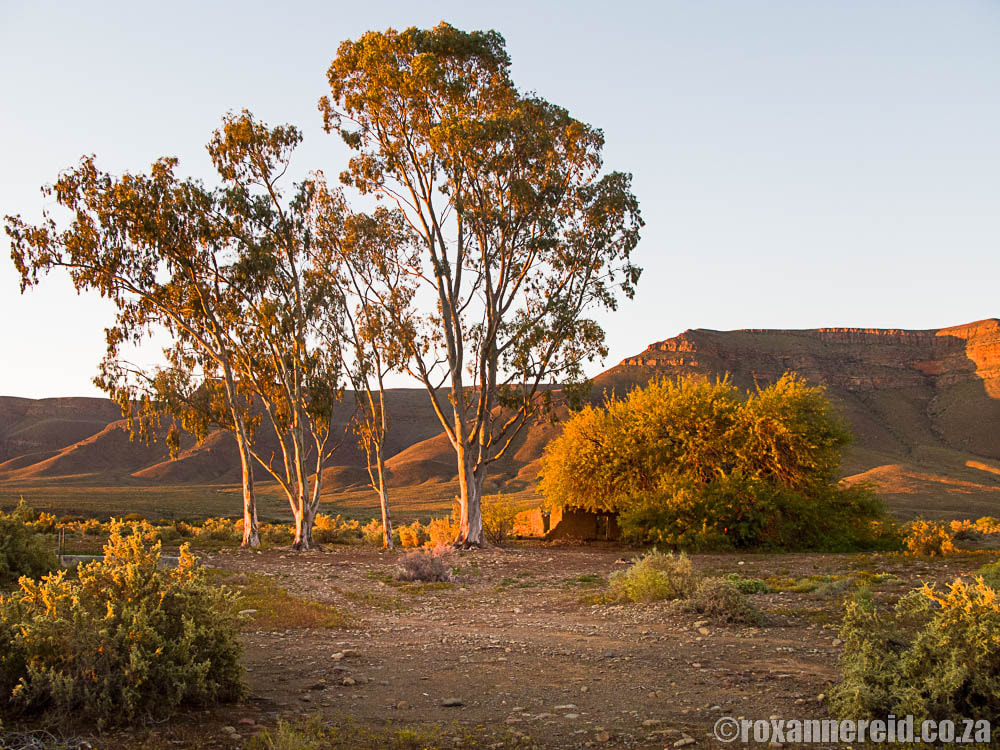
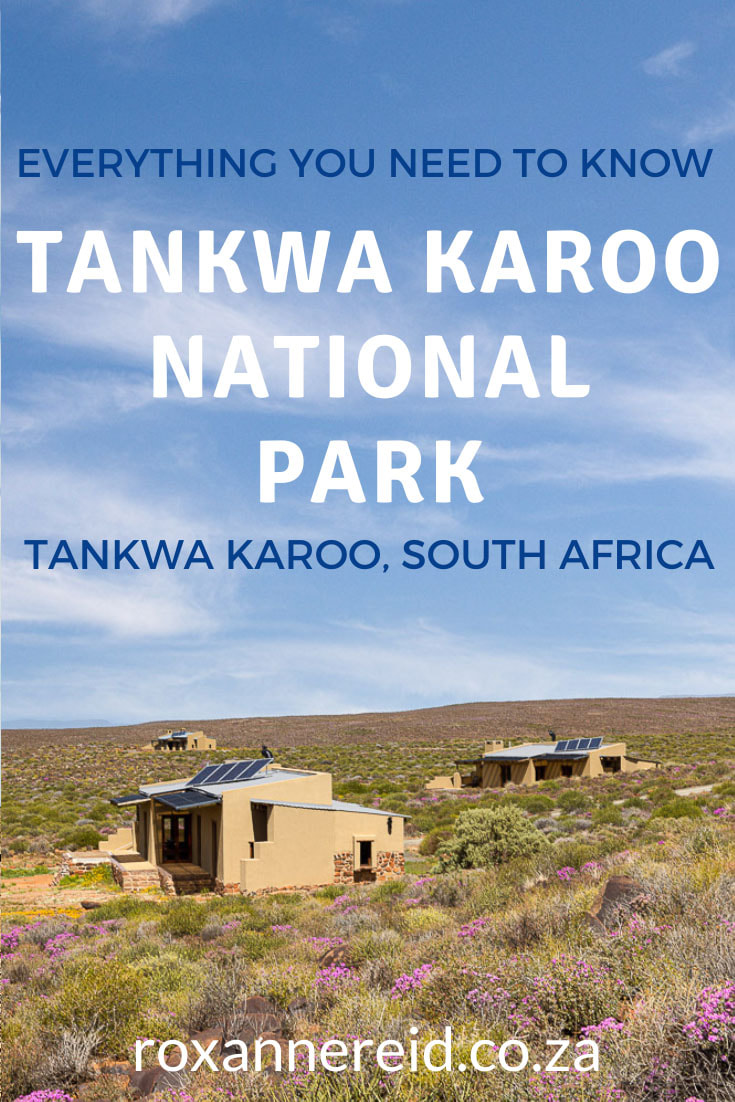
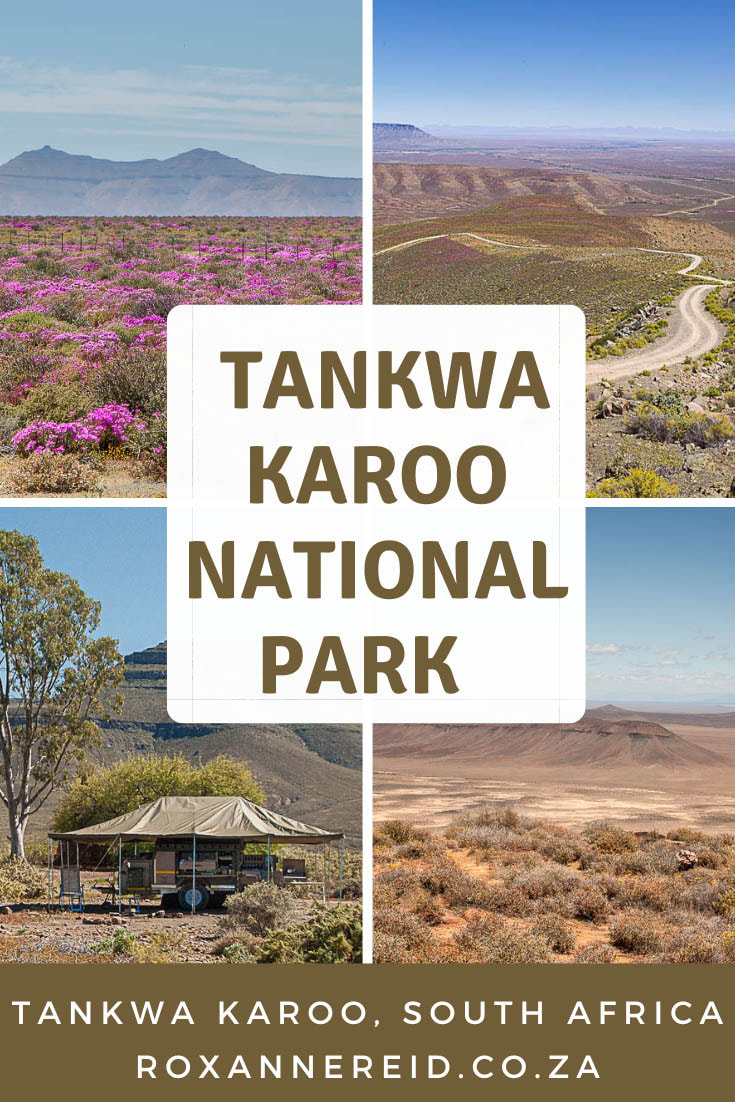




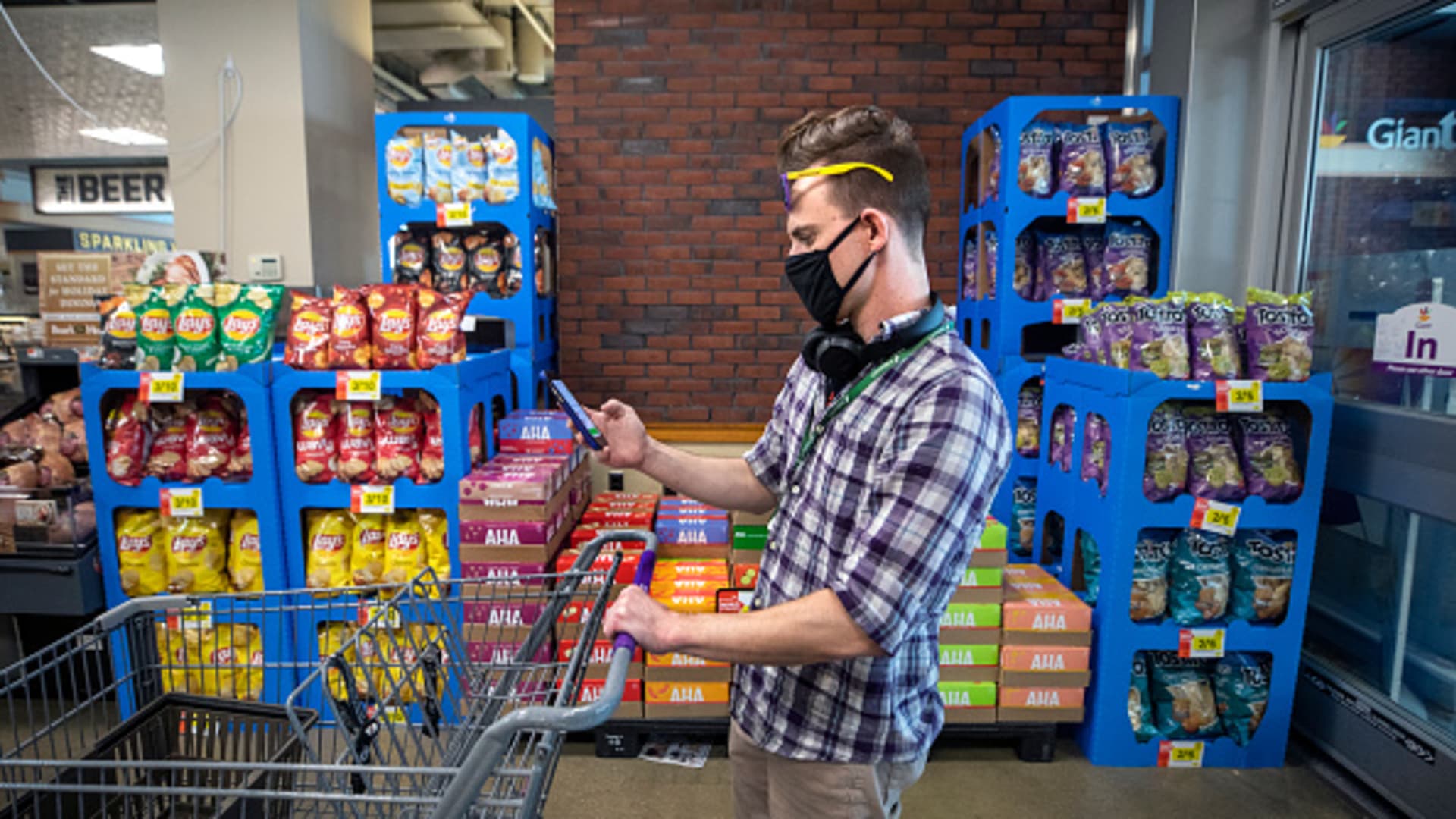
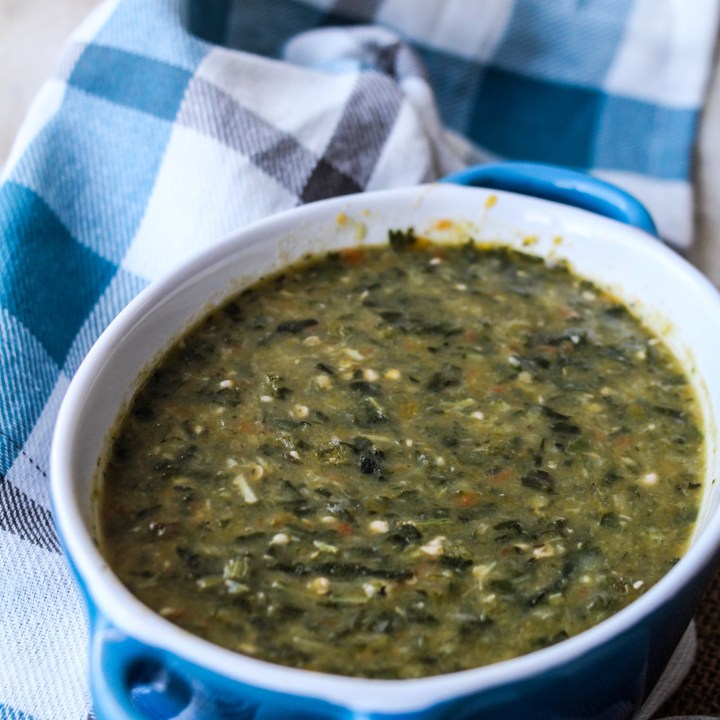

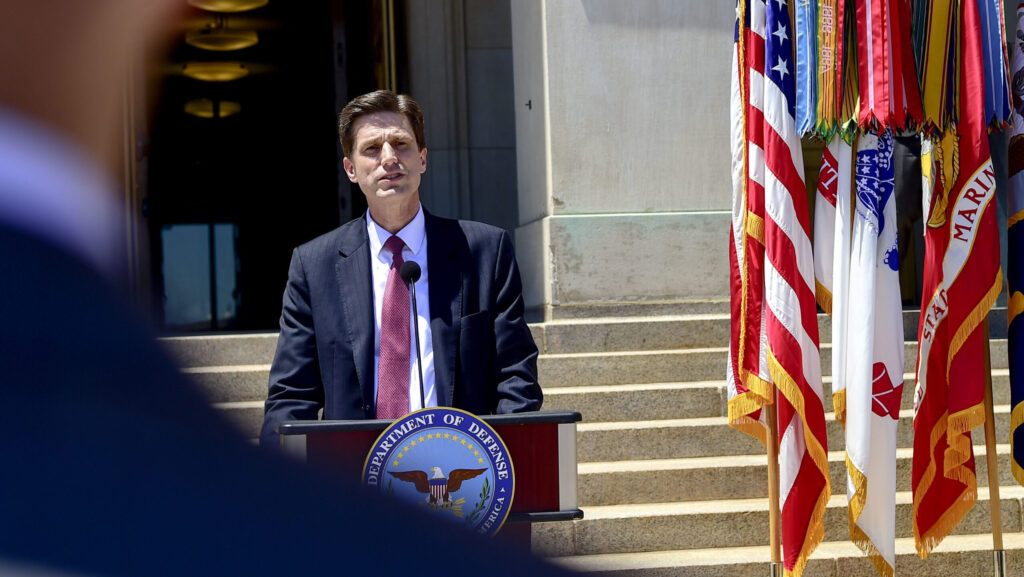


Discussion about this post